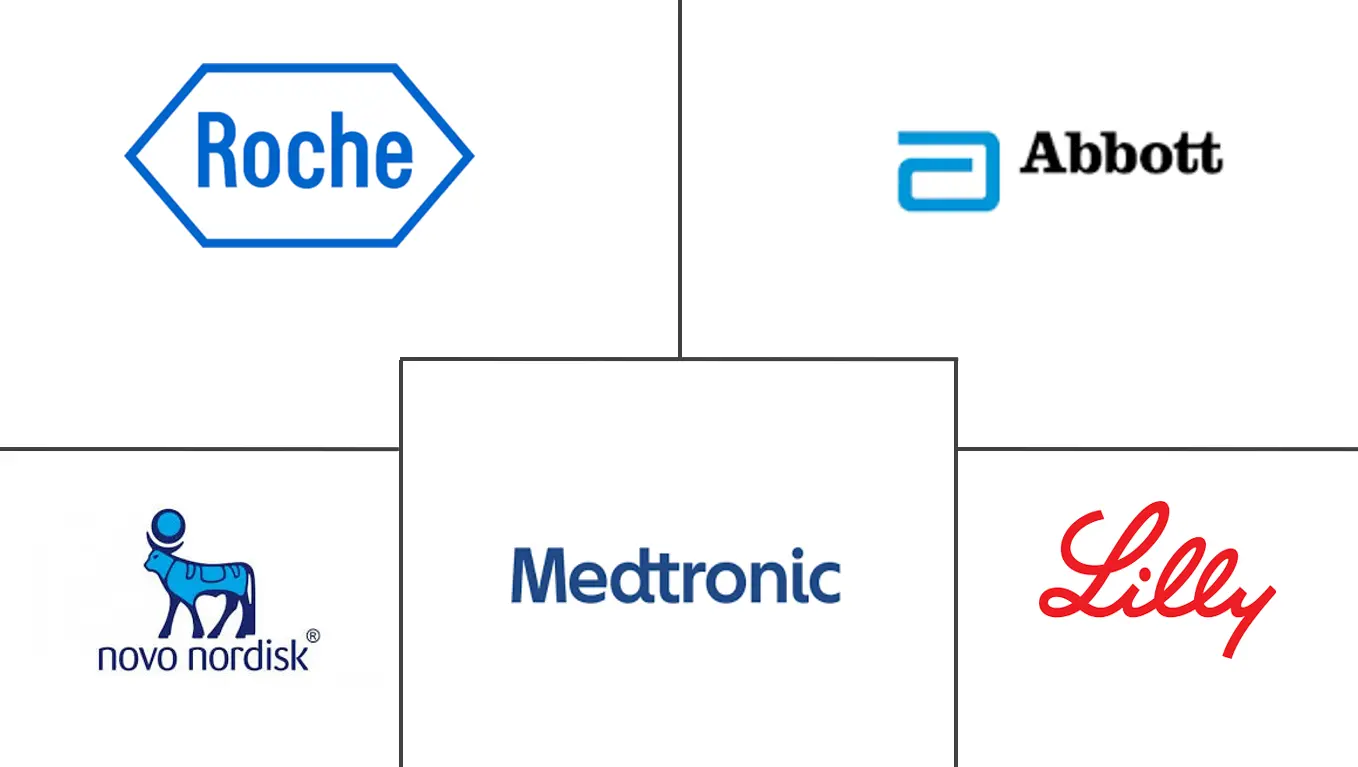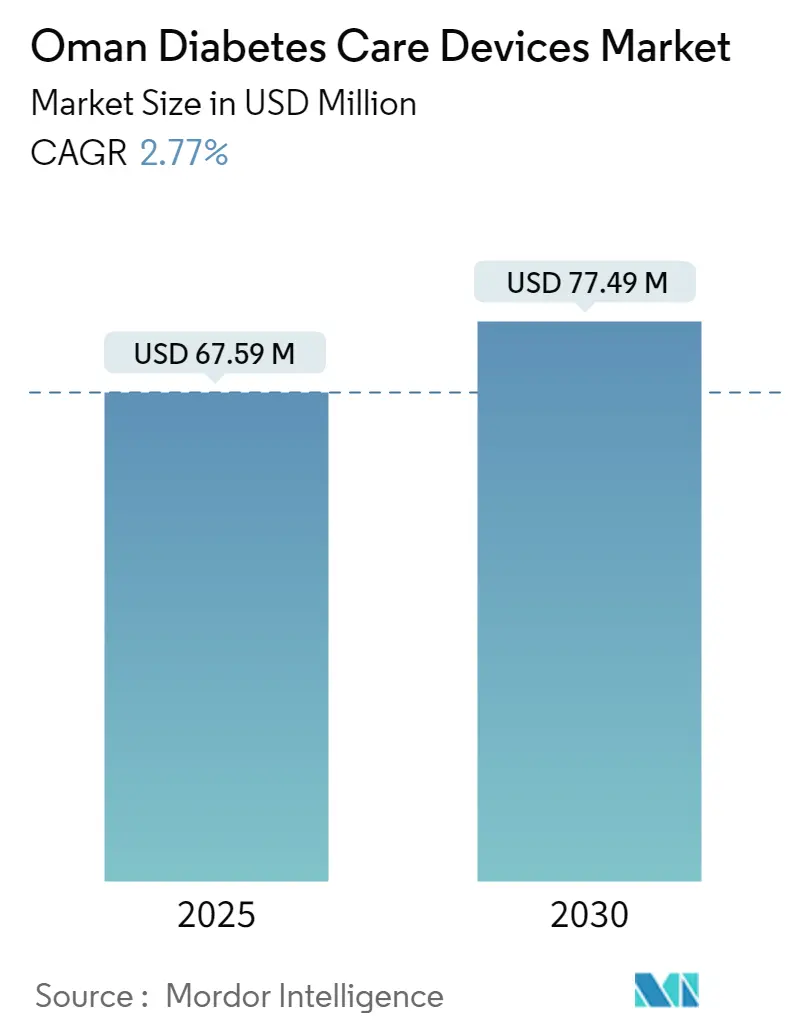
Oman Diabetes Care Devices Market Analysis by Mordor Intelligence
The Oman Diabetes Care Devices Market size is estimated at USD 67.59 million in 2025, and is expected to reach USD 77.49 million by 2030, at a CAGR of 2.77% during the forecast period (2025-2030).
The COVID-19 pandemic positively impacted the Diabetes Care Devices market growth in Oman. Patients with diabetes infected with SARS-CoV-2 experience additional stress and increased secretion of hyperglycemic hormones, which results in elevated blood glucose, abnormal glucose variability, and diabetic complications. Diabetes and uncontrolled hyperglycemia are risk factors for poor outcomes in patients with COVID-19, including an increased risk of severe illness or death. To avoid complications, a patient's blood glucose level should be maintained at a normal level. The manufacturers of diabetes devices have taken care during COVID-19 to deliver devices to diabetes patients with the help of local governments. The pandemic has increased remote care from patients and providers and removed many long-standing regulatory barriers.
Although the current numbers show that diabetes is comparatively lesser in Oman, the growth rate of the diabetic population is projected to be higher in the country. According to Mordor Intelligence, the diabetic population in Oman increased to 0.57 million in 2021 and is expected to reach 0.84 million by 2027. 73 million adults (20-79) will live with diabetes in the IDF MENA Region 2021. This figure is estimated to increase to 95 million by 2030. Diabetes is associated with many health complications. Patients with diabetes require many daily corrections to maintain nominal blood glucose levels, such as administering additional insulin or ingesting additional carbohydrates by monitoring their blood glucose levels. Diabetes poses an emerging healthcare burden across the country and is one of the leading causes of premature death, morbidity, and loss of economic growth.
Oman Ministry of Health recently participated in the virtual launch of the WHO Global Diabetes Compact, organized jointly by the World Health Organization and the government of Canada, aimed at raising awareness level about diabetes as a global disease, in addition to expanding prevention and treatment as part of primary health care and universal health coverage.
Owing to the above factors, the studied market is anticipated to grow over the analysis period.
Oman Diabetes Care Devices Market Trends and Insights
Continuous glucose monitoring segment is expected to witness highest growth rate over the forecast period
The continuous Glucose Monitoring Segment is expected to witness a CAGR of 9.6% over the forecast period.
A CGM is used by inserting a small sensor into the abdomen or arm with a tiny plastic tube known as a cannula penetrating the top layer of skin. An adhesive patch holds the sensor in place, allowing it to take glucose readings in interstitial fluid throughout the day and night. Generally, the sensors must be replaced every 7 to 14 days. A small, reusable transmitter connected to the sensor allows the system to send real-time readings wirelessly to a monitor device that displays blood glucose data. Some systems have a dedicated monitor, and some display the information via a smartphone app.
Continuous glucose monitoring sensors use glucose oxidase to detect blood sugar levels. Glucose oxidase converts glucose to hydrogen peroxidase, which reacts with the platinum inside the sensor, producing an electrical signal to be communicated to the transmitter. Sensors are the most important part of continuous glucose monitoring devices. Technological advancements to improve the accuracy of the sensors are expected to drive segment growth during the forecast period.
The frequency of monitoring glucose levels depends on the type of diabetes, which varies from patient to patient. Type-1 diabetic patients must check their blood glucose levels regularly, monitor their blood glucose levels, and adjust the insulin dosing accordingly. The current CGM devices show a detailed representation of blood glucose patterns and tendencies compared to a routine check of glucose levels at set intervals. Furthermore, the current continuous glucose monitoring devices can either retrospectively display the trends in blood glucose levels by downloading the data or give a real-time picture of glucose levels through receiver displays.
According to the Oman Diabetes Association, diabetes is a costly chronic illness that needs control of blood sugar levels using medical devices. It imposes a challenge for low-income and social security patients. Thus, an initiative is designed to reduce the burden on these targeted groups, consequently promoting sugar control. Under the ODA initiative, Oman is trying to inform diabetes patients about using blood glucose devices. Moreover, the number of new cases among children is about 60 annually. According to local studies and reports on good diabetes control, the rate in adult patients ranges from 32-35%, whereas it reaches 10-12% among children and adolescents. The Government is working on increasing awareness of diabetes and access to sugar monitors to improve good diabetes control for children.
The studied market is anticipated to grow over the analysis period due to the above factors.
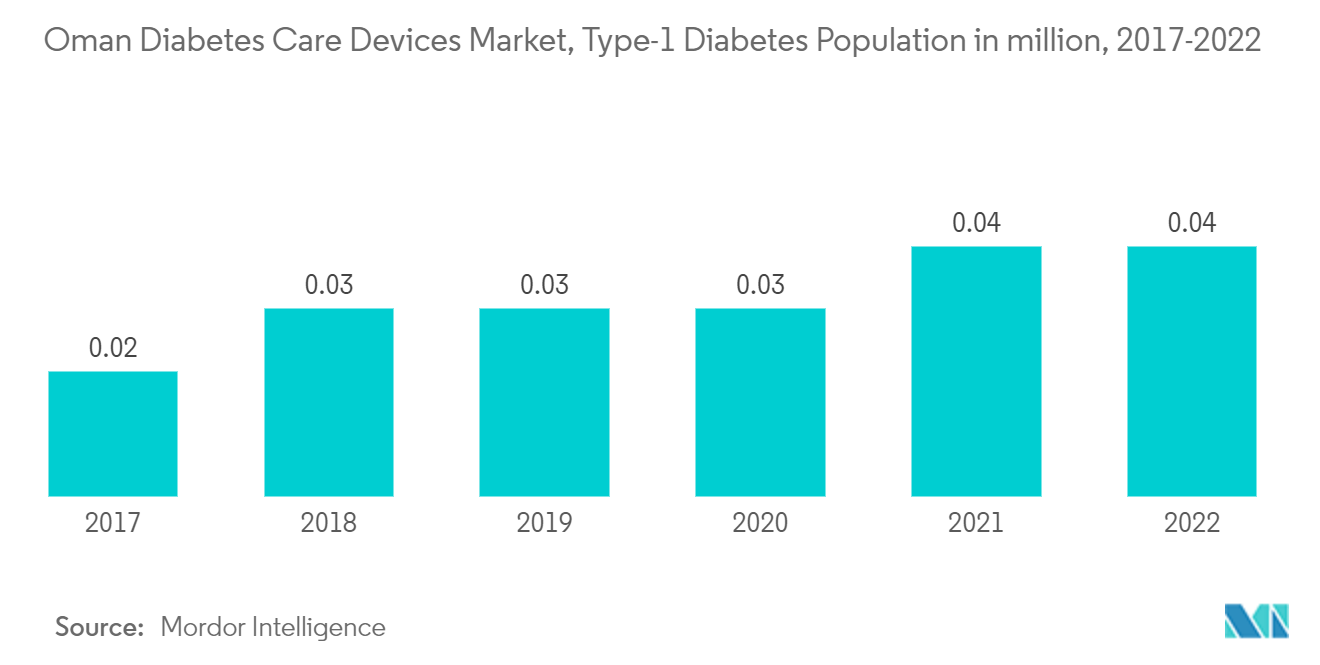
Insulin cartridges in reusable pens hold the highest share in the management devices segment in the current year
Insulin cartridges in reusable pens hold the highest share of about 61.1% in the management devices segment in the current year.
Insulin cartridges in reusable pens are an upgraded version of insulin vials. Most types of insulins are manufactured in the form of cartridges, making them easily accessible. These devices include all the functional benefits of reusable pens and are cost-effective, as these cartridges are less expensive compared to disposable insulin pens in the long run. Due to the increasing demand for insulin cartridges, most insulin device manufacturers produce reusable insulin pens compatible with various manufacturers' cartridges. These insulin cartridges are considered more consumer-friendly, as they are smaller and less noticeable than the classic vial-and-syringe. These devices are also more portable for consumers on the go. Open cartridges do not need to be refrigerated, making storage easy for consumers. Thus, cartridges are the most cost-effective insulin use, as reusable pens are a one-time investment, unlike disposable pens.
The WHO Global Diabetes Compact focuses on reducing obesity and emphasizes improving access to affordable health services and medicines for early diagnosis and treatment of diabetes. The Ministry of Health, Oman, is strategically planning to contain the growing burden of diabetes and invest in all means to control it. They stated, 'Our work needs to ensure equitable and affordable access to treatment, and it is essential that we advocate for investments in diabetes education and prevention programs.' Risk factors such as insufficient physical activity and the consumption of unhealthy diets are contributing to the development and progression of the disease. The Health Minister of Oman, in 2021, stated that 15% of the population in Oman was known to include diabetes, and more than 6500 cases of diabetes are diagnosed yearly in the country's primary healthcare facilities. In addition, 35% of the population is overweight, and 30% are reported to be obese.
Technological development is gaining momentum in the insulin devices market. Over the years, several technological innovations developed that created new devices that are much less cumbersome and more comfortable for patients than traditional ones. Such advantages helped the rise in the adoption of these products in the market.
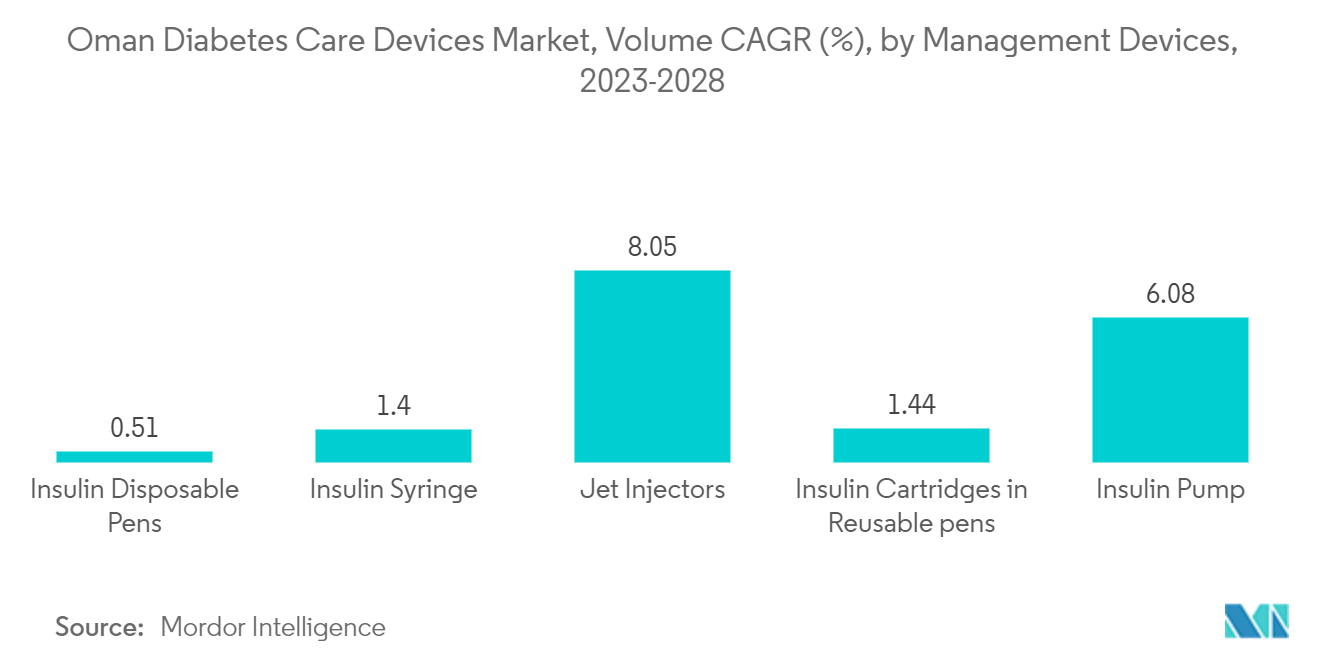
Competitive Landscape
The Oman Diabetes Care Devices Market is semi-consolidated, with few significant and generic players. Manufacturers drove constant innovations to compete in the market. The major players, such as Abbott and Medtronic, underwent many mergers, acquisitions, and partnerships to establish market dominance while also adhering to organic growth strategies, which is evident from the R&D spending of these companies.
Oman Diabetes Care Devices Industry Leaders
Abbott Diabetes Care
Novo Nordisk A/S
Medtronic PLC
Eli Lilly and Company
Roche Diabetes Care
- *Disclaimer: Major Players sorted in no particular order
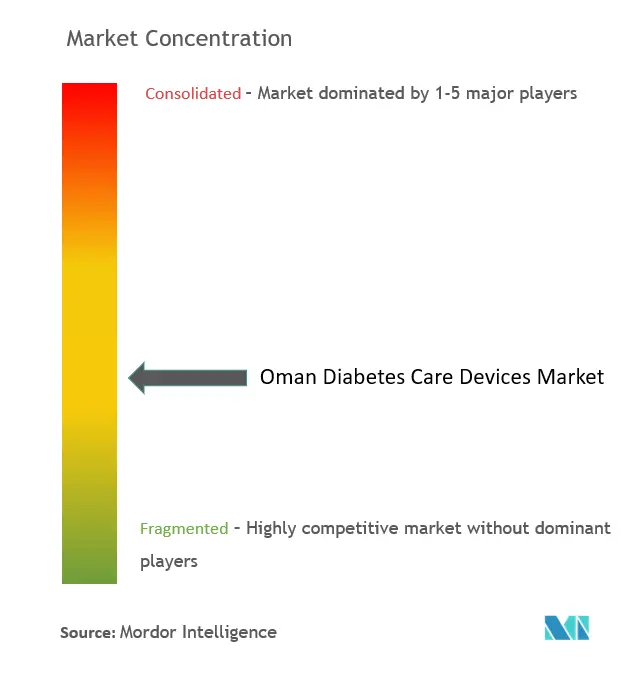
Recent Industry Developments
- July 2023: Khazaen Economic City entered the pharmaceutical sector, to produce in cooperation with a foreign partner in Oman to localize this expertise and technology.
- May 2023: Medtronic plc announced it has entered into a set of definitive agreements to acquire EOFlow Co. Ltd., manufacturer of the EOPatch device - a tubeless, wearable, and fully disposable insulin delivery device. The addition of EOFlow, together with Medtronic's Meal Detection Technology algorithm and next-generation continuous glucose monitor (CGM), is expected to expand the company's ability to address the needs of more individuals with diabetes.
Oman Diabetes Care Devices Market Report Scope
Diabetes care devices are the hardware, equipment, and software used by diabetes patients to regulate blood glucose levels, prevent diabetes complications, lessen the burden of diabetes, and enhance the quality of life. The Oman Diabetes Care Devices Market is segmented into monitoring devices (self-monitoring blood glucose devices (glucometer devices, blood glucose test strips, and lancets), continuous glucose monitoring devices (sensors and durables)), management devices (insulin pumps (insulin pump devices, insulin pump reservoirs, and infusion set), insulin syringes, cartridges in reusable pens, disposable pens, and jet injectors). The report offers the value (USD) and volume (units) for the above segments.
| Self-monitoring Blood Glucose Devices | Glucometer Devices |
| Blood Glucose Test Strips | |
| Lancets | |
| Continuous Glucose Monitoring | Sensors |
| Durables |
| Insulin Pump | Insulin Pump Device |
| Insulin Pump Reservoir | |
| Infusion Set | |
| Insulin Syringes | |
| Cartridges in Reusable pens | |
| Insulin Disposable Pens | |
| Jet Injectors |
| Monitoring Devices | Self-monitoring Blood Glucose Devices | Glucometer Devices |
| Blood Glucose Test Strips | ||
| Lancets | ||
| Continuous Glucose Monitoring | Sensors | |
| Durables | ||
| Management Devices | Insulin Pump | Insulin Pump Device |
| Insulin Pump Reservoir | ||
| Infusion Set | ||
| Insulin Syringes | ||
| Cartridges in Reusable pens | ||
| Insulin Disposable Pens | ||
| Jet Injectors | ||
Key Questions Answered in the Report
How big is the Oman Diabetes Care Devices Market?
The Oman Diabetes Care Devices Market size is expected to reach USD 67.59 million in 2025 and grow at a CAGR of 2.77% to reach USD 77.49 million by 2030.
What is the current Oman Diabetes Care Devices Market size?
In 2025, the Oman Diabetes Care Devices Market size is expected to reach USD 67.59 million.
Who are the key players in Oman Diabetes Care Devices Market?
Abbott Diabetes Care, Novo Nordisk A/S, Medtronic PLC, Eli Lilly and Company and Roche Diabetes Care are the major companies operating in the Oman Diabetes Care Devices Market.
What years does this Oman Diabetes Care Devices Market cover, and what was the market size in 2024?
In 2024, the Oman Diabetes Care Devices Market size was estimated at USD 65.72 million. The report covers the Oman Diabetes Care Devices Market historical market size for years: 2019, 2020, 2021, 2022, 2023 and 2024. The report also forecasts the Oman Diabetes Care Devices Market size for years: 2025, 2026, 2027, 2028, 2029 and 2030.
Page last updated on:
Oman Diabetes Care Devices Market Report
Statistics for the 2025 Oman Diabetes Care Devices market share, size and revenue growth rate, created by Mordor Intelligence™ Industry Reports. Oman Diabetes Care Devices analysis includes a market forecast outlook for 2025 to 2030 and historical overview. Get a sample of this industry analysis as a free report PDF download.
